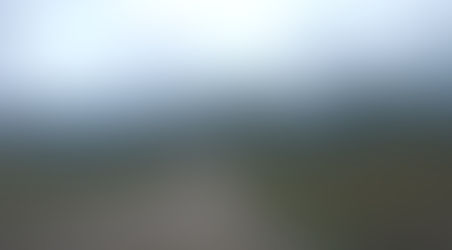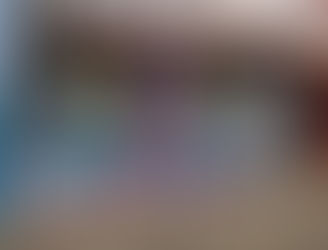South of Ecuador: Cuenca, Loja and surroundings
- asiaquentin
- 6 mai 2018
- 6 min de lecture
So here we’re in Ecuador! And it’s just insanely good! It's very good to find a green scenery, after weeks spent in the Peruvian desert. We’ve arrived in Cuenca in the early morning on February 7, 2018.

First good news is that the bus station is located at a half-hour walk from the center. And there’s only one station per city in this country, which is simply great and it facilitates incredibly the logistics (in Peru each company has its own terminal, so to compare the prices/find the soonest bus took A LOT of time).

Carnaval in Cuenca
The city is very beautiful, situated in a valley where 3 rivers meets, with a view on nearby mountains and the Cajas National Park. What’s more, Cuenca is dotted with parks and old buildings. No wander, that this city was classified by Unesco. For Quentin is the most beautiful city in South America that we’ve visited since the beginning of the trip (for Asia, it's the runner-up, after Valparaiso, but the difference is very small).

In addition to strolling in the historic center we’ve enjoyed it’s museums (most of them are free of charge) and its Mercado 10 de Augosto, where you can eat (too much) for $ 1.5.

Ice-cream seller, version punk
To see in Cuenca:
Museo Pumapungo also known as the Museum of the Bank. There you can find different exhibitions (paintings, history of cacao trade, numismatics). For us the most interesting was the ethnological one, that presents the diversity of traditions and identities in the country and presents the focus on Amazonian tribes. Since 2008, Ecuadorian constitution puts emphasis on the multiethnic, multilinguistic and multicultural character of the country.

While at the museum, do not miss the Inca ruins of Pumapungo, the botanical park inspired by the knowledge of this culture and home to a small zoo.

Lama =]
Museum of Aboriginal Cultures (entrance $ 1.5). In an old colonial house, this "small" museum exhibits mainly pottery, tools and arts of indigenous cultures that lived in Ecuador before the arrival of la Conquista. You can find there as well one of the oldest musical instruments in the world: stone “bells” that have a very metallic sound (check it out in our sounds section). It’s hard to understand the exhibition if you can’t read in Spanish (there’s only spanish verstion of paper guide), but still it’s interesting ... and in the café on the ground floor you can drink pure ambrosia (the heavenly taste after instant coffee omnipresent in Peru) accompanied by banana-nut bread. Cajas National Park

During our stay in Cuenca, Quentin worked on a website creation for the daughter of our Airbnb host. In exchange for a lower rent and showing us around the city. So, the first time we’ve visited Cajas was with those two. It was a really nice walk around the Lake Llaviucu and we’ve enjoyed this beautiful and sunny day.

And to make it even better, in one of the many restaurants along the road, we ate together deliciously prepared fish (if you wish, you can fish them yourself in the pool nearby).

The second time we went to Cajas, we’ve took a bus from behind Féria Libre (small station located behind the market place, south-west part of Cuenca). For us it was a good alternative to go all the way from our Airbnb to the bus station.

The journey costs $ 2 and lasts more or less 40 minutes before you get at the refuge /park entrance (la Torreadora). We’ve decided to make the hike number 1 (the pink one), that has the biggest variety of views and which tooks about 3hr to finish (while taking your time).

The scenery is just epic and we had the chance to avoid the bad weather (which isn’t that easy in Cajas).

Second lama =]
During another outing with the family, while in their country house, we had a chance to cook on an open fire and eat a cuy… (pronounced like “couille” in French… which means balls… You just cannot imagine the amount of jokes that Quentin did about cooking cuy/balls… ) It’s really tasty! The crispy skin resembles roasted pig and the flesh is softer than chicken but the taste is relatively simmilar... Just to make things clear: we’re talking about a small rodent, which is called "guinea pig" in English.

Taste batter than it looks
An outing to Chordeleg and Gualaceo It is possible to take a bus from the station in the direction of Sigsig to make a one-day getaway from the city and discover the surrounding villages. Gualaceo is a city specialized in textile and shoe manufacturing. The walk along the river is pretty cool. Chordeleg is a city specialized in sophisticated silver jewelery. These specialization dates back from colonial times. We would’ve liked to spend more time in Chordeleg but a big downpour caught us just before we’ve started small hike. This "crafts trail", that dates back from Spanish times, consists as well of villages specialized in the production of guitars and other musical instruments, or those producing the famous "panama hat" (which actually comes from Ecuador), or fruits.

Worth seeing at Cuenca as well:
Planetarium (free entrance) Quentin is an indisputable fan of planetariums, but this one lacks some information on stars visible in southern hemisphere. Church Todos Los Santos which, during the Spanish colonization, was the border limiting the access to the city for the natives.

CIDAP, cultural and artistic craft center displaying objects from South and Central America; free entry as well. There’s quite a lot of objects from different corners of the continent and from Ecuador.

The cathedral and the central square in front of it, from where the Free Walking Tours leaves almost every day at 10:30 am (calle Luis Cordero).

Centro Cultural Prohibido, something between the art gallery and well-styled bar. Place created by a local artist, who was "banned" from local art galleries, because of the theme of his works (relationship between sacrum and profanum, a lot of allusions to the Catholic religion). The place is nice to visit, to drink a coffee (yes, we were craving good coffe while in Peru) and listen to good music (Mulatu Astatke, Pink Floyd among others).

During a visit to Cuenca do not forget to just wander the streets of the old town and Barranco (along the Tomebamba River): there are plenty of nice buildings and places to just chill in the sun. Oh, we’ve forgot to mention, that due to its climate Cuenca is called “the city of eternal spring”. Loja Before joining Quentin’s brother on the coast, we’ve made a small detour little further south of Cuenca in the city of Loja.

The city is not splendid but it was rather nice and what’s the most important, it is a starting point for the Podocarpus hike.

Kremlin, slide version
Podocarpus is a rather difficult hike. We chose the cheapest option by taking a bus that drops us at the edge of the road at the park entrance ($0,5 per person). To get to the starting point of the hike we had to walk 8Km up the dirt road (the views are pretty nice).

Once near the refuge, we took the 5km loop. The scenery is spectacular but the elevation is rather sturdy, in fact it quickly turns into climbing. And the way down is alike, you have to use the ropes installed as a support.

We’ve eaten a quick lunch on the top of the mountain with a small group of tourists rather unaccustomed to hiking (it’s not the best idea to hike here is sneakers) before the descent.

Unfortunately, strong hail storm caught us after few minutes and slowed us a lot. The hailstones were big enough to cause pain while landing on our heads and it lasted over half-hour, transforming the small path on the crest into river. But the view is worth it.

After finishing the loop, we had to go back the same 8km to catch the bus back to Loja and ... to our bed! Even if tiring (or maybe because of that) for Asia it was one of the best hikes we’ve made during this trip!

Any idea what's the name of this fruit?




















Commentaires